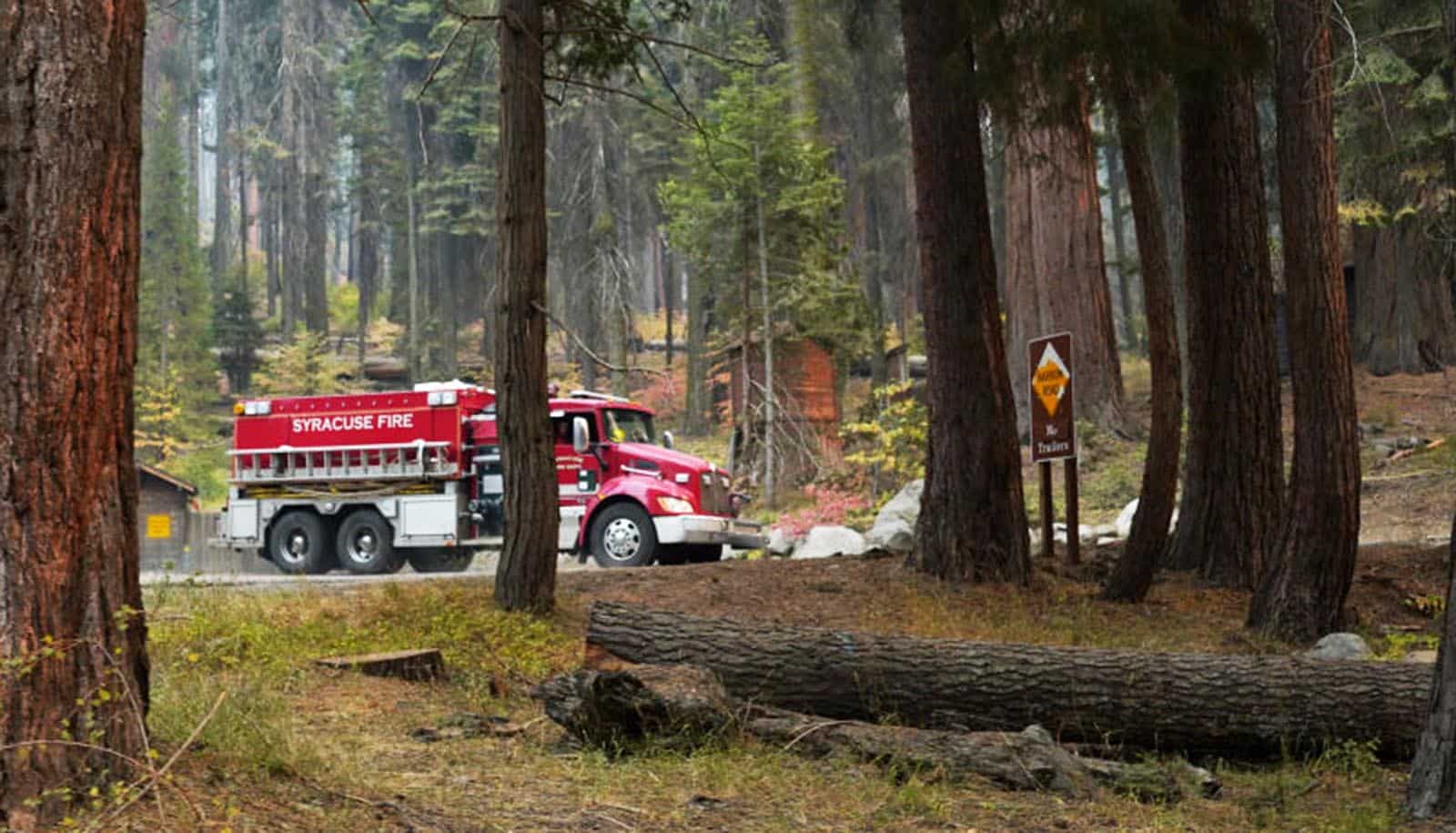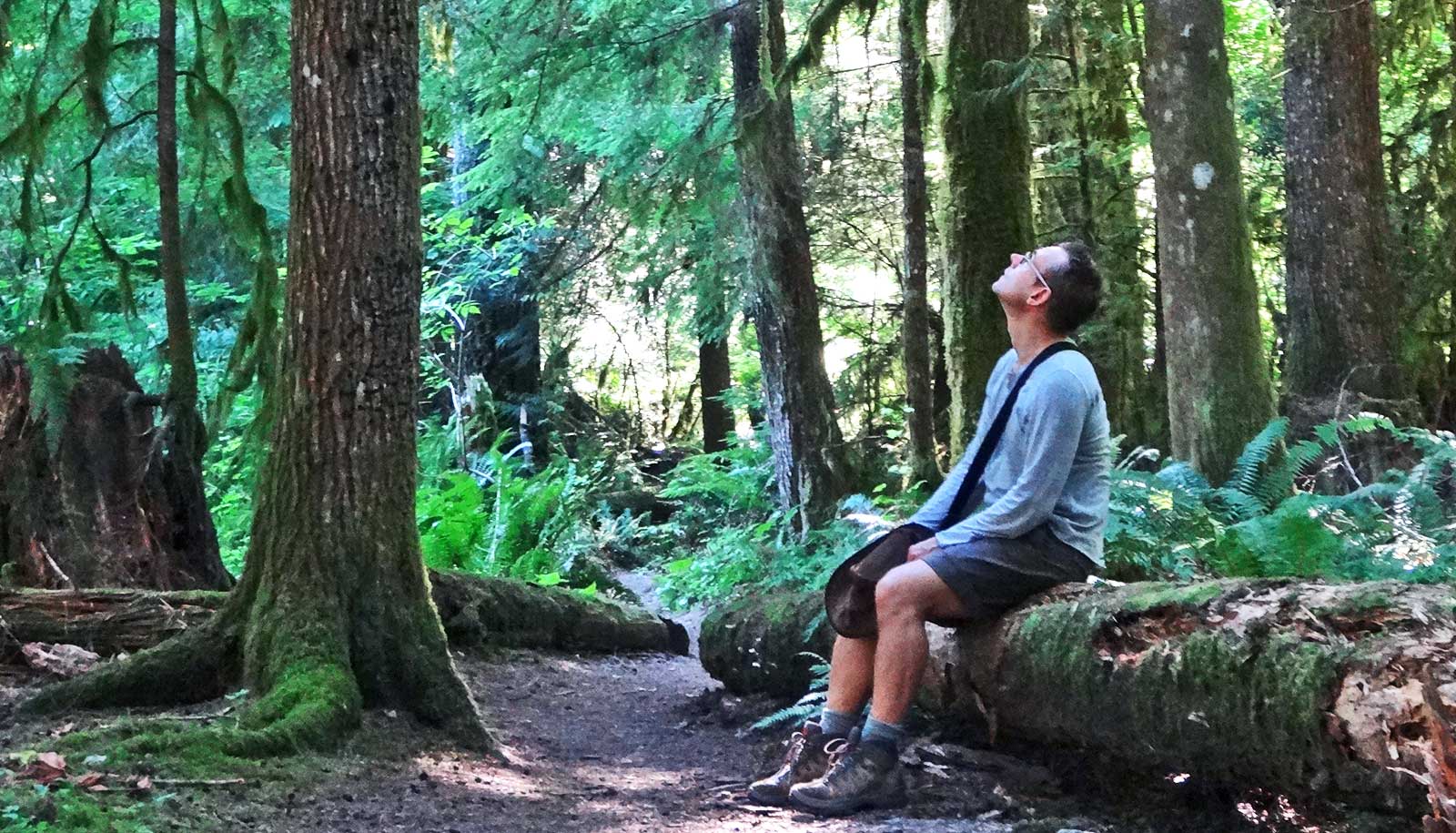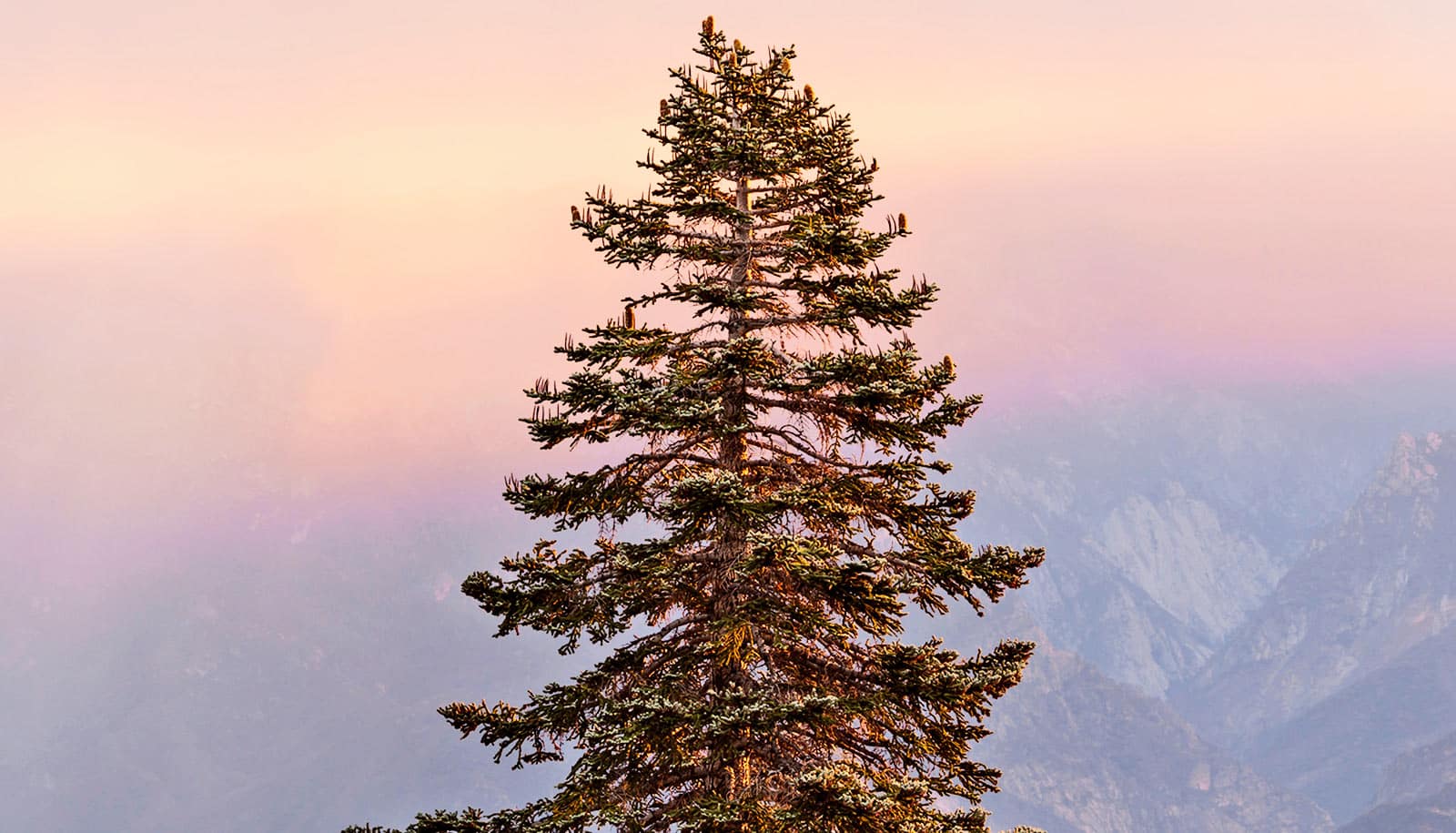
A fire truck drives along Crescent Meadow Road in Giant Forest during a tour of the KNP Complex fire burn area on September 30, 2021 in Sequoia National Park, California. (Credit: Eric Paul Zamora-Pool/Getty Images )
Dead trees on forest floor helped fuel Sierra Nevada fire
Old dead trees on the forest floor are a chief fuel driving wildfires in California's Sierra Nevada mountains, a study of the KNP Complex Fire shows.
Decades-old large dead trees are one of the chief fuels driving wildfires in California’s Sierra Nevada mountains, new research shows.
Wildfires in California, exacerbated by human-driven climate change, are getting more severe. To better manage them, there’s a growing need to know exactly what fuels the blazes after they ignite.
“Our findings support the idea that large-diameter fuel build-up is a strong contributor to fire severity,” says Audrey Odwuor, a PhD candidate in the University of California, Irvine’s earth system science department and lead author of the study in Environmental Research Letters .
Researchers have known for decades that an increasing number of trees and an increasing abundance of dead plant matter on forest floors are the things making California wildfires more severe—but until now it was unclear what kinds of plant debris contribute most to a fire.
To tackle the question, Odwuor and two of the study’s coauthors—James Randerson, professor of earth system science at UC Irvine, and Alondra Moreno of the California Air Resources Board—drove a mobile lab owned and operated by the lab of coauthor Francesca Hopkins of UC Riverside, to the southern Sierra Nevada mountains during 2021’s KNP Complex Fire.
The KNP Complex Fire burned almost 90,000 acres in California’s Sequoia and Kings Canyon National Parks. In the fire’s smoke, the team took samples of particulate matter-laden ai r and analyzed the samples for their radiocarbon content at UC Irvine’s WM Keck Accelerator Mass Spectrometer facility with coauthor Claudia Czimczik, a professor of earth system science.
Different fuel types have different radiocarbon signatures, Czimczik says, such that when they analyzed the smoke they discovered radiocarbon values associated with large fuel sources like fallen tree logs.
“What we did was pretty distinctive, as we were able to identify fuel sources by measuring the wildfire smoke,” says Czimczik. “Our approach provides what we think of as an integrated picture of the fire because we’re sampling smoke produced over the course of the fire that has been transported downwind.”
The team also saw elevated levels of particulate matter that is 2.5 microns in diameter or less, which includes particles that, if inhaled, are small enough to absorb into the bloodstream.
The preponderance of large-diameter fuels is new in western forests.
“We’re really in a situation that’s a consequence of both management strategies and climate warming since European-American settlement began in California,” Odwuor says. “These fuels are building up on the forest floor over periods of decades, which is not typically how these forests were maintained.”
It’s information that could help California better manage its wildfires, Odwuor says.
“The knowledge that large-diameter fuels drive fires and fire emissions—at least in the KNP Complex Fire—can be useful for knowing which fuels to target with fuel treatments and what might end up in the smoke from both wildfires and prescribed fire. The idea is that because we can’t control the climate, we can only do our best to manage the fuels, which will theoretically have an impact on fire severity and the composition of the smoke.”
But the solution isn’t as straightforward as removing trees from forest floors, because, among other things, they provide habitat for wildlife . That, and “once you get them out, where do you send them? There are only so many mills in California that can handle all the wood,” Odwuor says.
Where the new knowledge could be helpful is with prescribed burns, in which teams burn tracks of forest in a planned fashion with the aim of reducing the amount of fuel available for future wildfires.
“We’re hoping to build some urgency for these management strategies,” says Odwuor.
Source: UC Irvine
The post Dead trees on forest floor helped fuel Sierra Nevada fire appeared first on Futurity .
Share this article:
This article uses material from the Futurity article, and is licenced under a CC BY-SA 4.0 International License. Images, videos and audio are available under their respective licenses.
Related Articles:
Wildfire drives ‘refugee’ trees to cooler, wetter ground
Nov. 16, 2021 • futurity‘Zombie forests’ are stuck in regions that are too warm
March 8, 2023 • futurityLinks/images:
- https://doi.org/10.1088/1748-9326/aced17
- https://www.futurity.org/wildfires-spot-fires-trees-grasses-2921412/
- https://www.futurity.org/wildfire-nitrogen-dioxide-remote-forests-2967342/
- https://www.futurity.org/forest-symbiosis-maps-2067732-2/
- https://www.futurity.org/conservation-wildlife-protected-areas-2938842/
- https://news.uci.edu/2023/09/25/uc-irvine-scientists-reveal-what-fuels-wildfires-in-sierra-nevada-mountains/
- https://www.futurity.org/sierra-nevada-fires-knp-complex-fire-2979402/
- https://www.futurity.org


